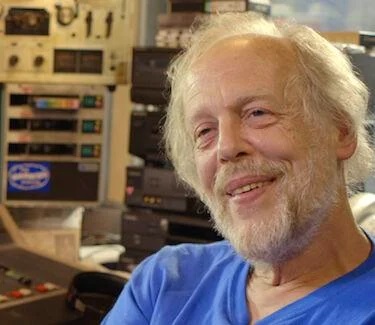
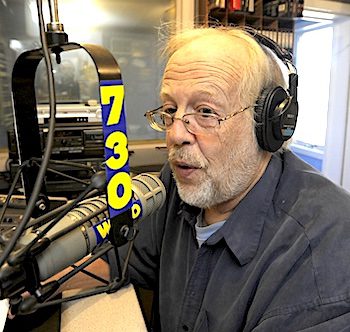
REMEMBERING BOB BITTNER
New England USA radio fans are saddened by the passing on May 26, 2023 of Bob Bittner, lifetime broadcaster and the owner/operator of the "Memories Radio" adult standards music network on at least two New England area radio station signals: WBAS(AM) in Cape Cod (1240kHz), and WJIB(AM) in Cambridge/Boston (720kHz). Bittner was 73 years young, two weeks short of his 74th birthday. It was in the 1990's that Bob Bittner entered the radio ownership business, submitting the winning bid of $277,115 for WLIB (then WLVG). Bittner purchased and sold a number of USA signals throughout New England, before settling on five simulcast signals of "Memories Radio" for many years. Ben Ewen-Campen, Somerville City Council President, tweeted, "I'm heartbroken to learn that Bob Bittner passed away. He ran the indescribably great local radio station WJIB AM720, "The Memories Station." What a beautiful life bringing this wonderful music into our homes, never playing commercial advertising, and reading his own public service announcements. Thank you, Bob."
meduci visited the WJIB transmitter site on August 16, 2021 in Cambridge, Massachusetts. We also recorded some airchecks from the meduci MW-2A PLL tuner during this same visit. Please play the video by clicking >> here: ![]()
THE VOICE OF RHODE ISLAND
Christopher DiPaola (Crazy Chris), owner/operator of stereo WBLQ (AM)- the only radio station in Westerly, Rhode Island USA- passed away on Friday, October 14, 2022. Chris was 49 years old. Chris was a true believer that everyone's voice deserved to be heard. Indeed, Chris put Jeff Deck on the radio at WBLQ(AM) on Saturday, July 2, 2022 from a live remote radio and web streaming broadcast at a vehicle dealership. At this time, I had the honor to meet this very fine gentleman, who gave back to his local community in so many ways.
Chris left us a legacy in live and local broadcast community radio. Chris was always there to lend a hand, and to make sure the community was the best it could be, whether it be Westerly, West Warwick, or Stonington. Chris will be truly missed by all of his loyal radio listeners, and by the community at large.
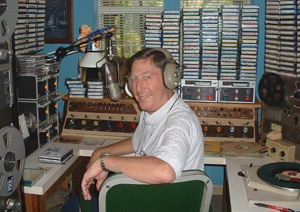
LISTEN TO WATV(AM) AND WSGN(AM) IN BIRMINGHAM, ALABAMA -- TRANSMITTING KAHN ISB AM STEREO -- IN DECEMBER 1982 (A MEDUCI WEB SITE EXCLUSIVE)!
With great pride, courtesy of Joe Dentici (also known on-air as "Russ Knight"), who was the Chief Engineer for full-power WATV(AM) Birmingham, Alabama USA in 1982, you can enjoy over one hour of AM stereo music using the Kahn-Hazeltine (ISB) format. This exclusive high quality recording was produced without the NRSC-1-B and RF mask limitations currently being placed on AM radio technology within the United States. Audio was 'flat' from the AM stereo transmitter to the Sansui AM stereo receiver, without any audio pre-emphasis and de-emphasis curves being introduced into the process. This is an excellent example of how well AM sounded "back in the day" when the stereo format wars were being battled nationwide. This audio recording was completed in December of 1982, directly recorded from Joe's Sansui TU-X1 AM Stereo receiver (decoded using the Kahn ISB format) off-air from WATV(AM), into one vintage Ampex 601-2 tape recorder, then (finally) to compact disk recorder. Joe said, "There is no coloring of the tapes or of the CD."
Joe wanted to make a difference in the radio broadcast industry, to give to the public a radio station that "sounded like their high fidelity sound system, and not like their radio." Joe built the entire WATV(AM) transmission chain: the transmitter was a CCA AM-1000D ("I loved that rig because it was built right and was all tube"), and the audio processing was from two Dorrough DAP 310's ("Mike Dorrough and I are the best of friends, and to this day, I have not seen or heard a better or more natural sounding units than those were") that were not stereo coupled. The feed to the transmitter was from two 15kHz phase equalized telco loop lines, that Joe ensured were as close to flat as could be possible. The studio employed one Collins IC-10 Console, ITC cart machines, QRK turntables, and RCA 77DX microphone. Joe said, "Remember that we were not limited in audio response or any RF filters forced on AM stations today. The quality you will hear is what real engineering is all about." And so, without further delay, here are two audio aircheck files resulting from Joe's engineering expertise>>
WATV_900kHz_Kahn_Dec1982 (73MB)
WSGN_610kHz_Kahn_Dec1982 (104.5MB)
To save these two files to your computer, you first right click on either file name above, then (depending on the functionality of your web browser), select "Save Target As..." then choose your destination for the audio file to be saved. Please note that you will not be able to stream either file from this web site. You should be able to save the file to your computer following the above instructions!
Sadly, both WATV(AM) AND WSGN(AM) discontinued their AM stereo broadcasts some time ago. And Joe Dentici lost his battle with leukemia early Thursday morning on June 29, 2006. Mr. Dentici boasted an incredible professional vitae, including stints as weekend DJ Russ Knight on WSGN "The Big 610", and later at WAQY 1220 before his long career in radio engineering, helping put WENN-FM 107.7 on the air in 1969, one of the first FM stations in the country programed to the black community, followed by many years at the EWTN broadcast complex in nearby Vandiver, before retiring to outside of Ashville. From there, he entertained much of northeast St. Clair County on Saturday nights with his "pirate" broadcasts from the shores of Neely Henry, bringing back the magic of '60s top-40 music radio (the picture you see here is not a radio station -- that was his home studio, and all of the broadcast gear you see around him were all lovingly restored by Mr. Dentici). I enjoyed our past written e-mail conversations about his vast technical history in broadcasting. These pages are dedicated to the memory of Joe. He enjoyed listening to his meduci AMX2000 tuner. May he rest in peace.
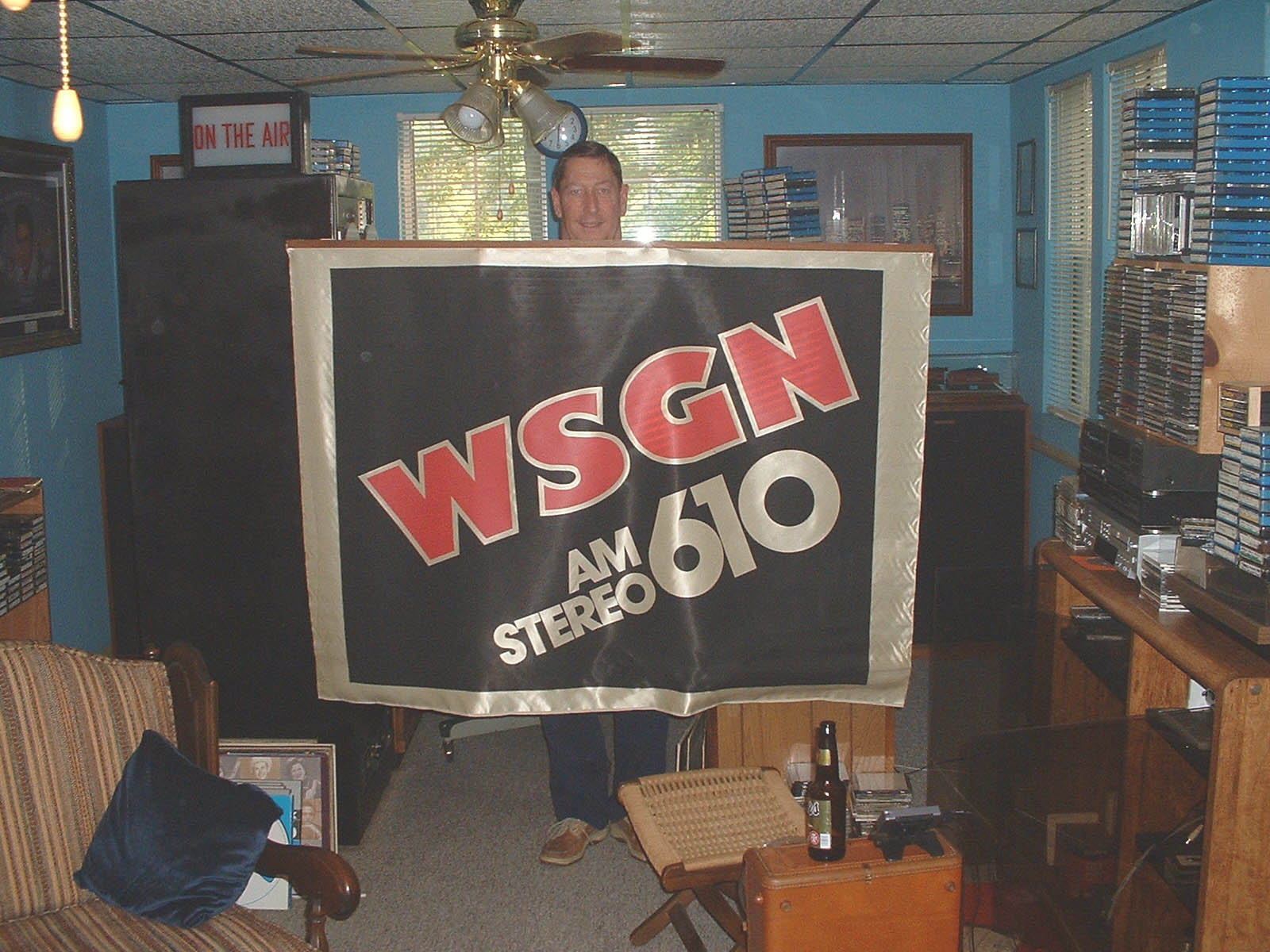
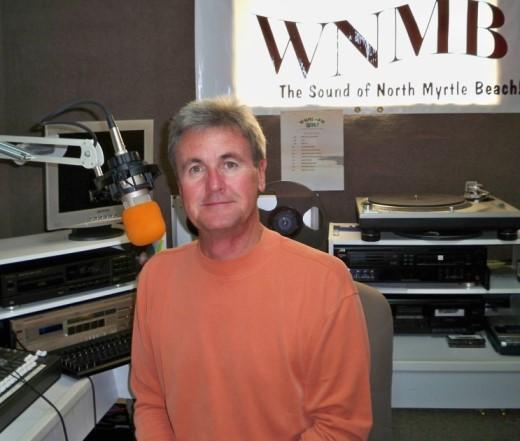
DEATH STRUCK BILL NORMAN, OWNER OF WNMB-AM STEREO, SOON AFTER SUFFERING STROKE
Bill Norman, owner of WNMB-AM, Norman Communications NMB Incorporated, and co-owner for WVCO-FM "The Surf 94.9" passed away on October 14th, 2012. WNMB(AM) is licensed to North Myrtle Beach, South Carolina USA and is currently silent. WVCO-FM is licensed to Loris, South Carolina USA. Bill was a strong advocate for live radio origination, and not a proponent for the style from the voice-tracking cookie-cutter automated formats from corporate radio. He was very active in his local community, and also provided the local voice through his stereo radio stations. Bill enjoyed broadcasting AM stereo, and showcased his talent in the office reception areas for his radio stations. There were many AM stereo radios displayed for listeners to sample WNMB. There are not many people in the world that showed so much devotion, and cared about their local community, like Bill Norman.
Soon after the meduci AMX2000 tuner was launched, Bill exchanged several e-mail with us, and he requested us to send one AMX2000 tuner to him. Bill also sent video commercials, air checks, logo, and artwork for his WNMB ("Wonderful North Myrtle Beach") AM stereo station, so that we could use for promotion on our web sites. Bill wrote to us, "We believe in AM Radio and in the great stereo sound. ... Just busy all the time and trying to juggle lots of things between day-to-day sales, radio programing, and community things."
On Monday, December 19th, 2005 at 3:30 p.m. Eastern time, Bill activated his new Delta AM stereo exciter at WNMB. Pilot lights on the AM stereo tuners came on in the studio, and the channel separation was immediately evident as "All I Want For Christmas" became the first song played in AM stereo on WNMB. Audio chain consisted of stereo BE console fed to FM stereo generator, which was then drive into a new Armstrong composite STL. This STL was received on the companion Armstrong receiver at WNMB's transmitter site, which is approximately five miles inland from the studios. From the STL to an Orban Optimod 9100A AM stereo processor, and the new Delta AM stereo exciter, then to the Gates One AM transmitter. Bill also used one companion Delta AM stereo modulation monitor. Rest in peace, Bill, our friend (May 8, 1949 to October 14, 2012).
LEONARD KAHN -- A TRUE AM STEREO PIONEER -- DIES AT AGE 86
It is with deep regret that we pass along the following news: Broadcast veteran Herb Squire confirmed that Leonard R. Kahn, the CEO head of Kahn Communications, passed away from natural causes on June 3, 2012 in south Florida USA at the age of 86 years old.
It has been said that pioneers have arrows stuck to their backs. Kahn was a true pioneer in the AM stereo wars, and took many arrows in his back over the years. Kahn was best known for his ISB AM stereo analog transmission / reception system that actually dated back to 1959, when Kahn worked for RCA Laboratories. This ISB system was not afraid of the dark. Kahn also created the "Symmetra-peak" technology in the late 1950's, that directly competed with Volumax and Audimax from CBS. Kahn's Symmetra-peak was a passive device, that equalized the positive and negative audio peaks that were sent to an AM broadcast station's transmitter. Symmetra-peak system increased the modulation density by several dB prior to the existence for sophisticated multi-band audio processing systems, per Squire. Kahn's other more recent inventions included PowerSide and CAM-D. PowerSide injected independent aural modulated information into one of the two AM broadcast sidebands. PowerSide improves reception from AM stations primarily on manually-tuned AM receivers, especially when first and second adjacent stations are present. CAM-D is an in-band, on-channel digital technology for AM stereo reception, intended to directly compete with iBiquity's HD Radio digital radio system for the domestic AM broadcast band.
Kahn did make contact with us in 2005 from his New York office. He loved AM radio very much!
It is not clear at this time who will continue to service, uphold, support, and to upgrade the Kahn CAM-D and PowerSide technologies and equipment currently being used at AM stations. Kahn held several hundred U.S patents >> read the Kahn Patents here. Kahn was also an Amateur Radio operator (license: WB2SSP). Kahn lost his wife, Ruth, in 2005. Kahn does not have any known survivors. May he rest in peace.
It is with great sadness that we reported the passing of Edwin R. Buterbaugh (pronounced Boo-ter-baw), on September 1, 2008 from a four-year bout with bladder cancer. Ed was 65 years old, and longtime Director of Engineering at WJR(AM) in Detroit, Michigan, USA. Ed was directly responsible for maintaining the legendary AM stereo sound heard at WJR(AM). Ed completely rebuilt the WJR studios twice, once in 1987, and again in 2001. He was instrumental in ensuring that all WJR(AM) remote live broadcasts were transmitted in stereo, including the annual Thanksgiving Day parade on Woodward Avenue in Detroit. On a personal note, it was absolutely awesome to listen to the many Detroit Tigers baseball and Red Wings hockey live broadcasts in stereo, as well as the Thanksgiving Day parade event. Many were received 200 miles in full stereo from the transmitter. It was not easy for WJR's engineering team to capture the crowd noises, ambience, press box, and other sounds, backhaul it from downtown Detroit to Riverview's transmitter site, and then transmit it on WJR(AM), the 50kW high power "The Great Voice of the Great Lakes" radio station. For those who were able to hear those historical AM stereo broadcasts, it was as if you were there at the stadium, directly in the middle of the action! It was also during Ed's tenure, that their Motorola C-QuAM stereo generator was overhauled, and all of the electrolytic capacitors were replaced within the unit. As a listener to WJR's AM stereo sound almost since the beginning, until its end on October 26, 2005, I know that Ed was very proud of the wide stereo separation and lightly processed air chain that he engineered. Ed's passion for quality AM stereo sound will be missed! There are not many chief engineers like him that share that passion. Mike Fezzey, WJR's President and General Manager, says, "Ed has led us through rebuilds, build-outs, blackouts, uplinks, downlinks, installs, re-installs, AM stereo, transmitter installations, digital conversion and more." Ed retired from WJR(AM) in 2004 after 20 years. WJR's Creative Director John Marshall reflects back on Ed's life. You can listen now by clicking>> here! 
It was our love of AM stereo that prompted us to attempt to listen to WJR(AM) stereo in November 1982 using the "two radio" trick. We did not hear any stereo separation, though the recovered sound was definitely phased in different directions from the two radios. WJR(AM) was a heritage station and class act that truly believed in the C-QuAM technology. There was a definite commitment from WJR(AM) to transmit good high quality stereo sound to their listeners. Stereo programing included the weekend music magazines Kaleidoscope and Patterns In Music, which focused on various music genres, themes, and eras, hosted by Mike Whorf. WJR(AM) was one of the few C-QuAM stereo pioneer stations. And those many stereo remote live broadcasts were not easy to put together. Ed's commitment to quality sound inspired us to research, develop, engineer, and to introduce the first AMX2000 stereo tuner in mid-2005. All of our AMX2000 tuners are now dedicated to the memory of Ed Buterbaugh, for your many engineering contributions at WJR(AM).
Prior to arriving at WJR(AM), Ed engineered the signature sound for 13 years at CKLW(AM) "The Big 8" (Windsor, Ontario Canada) in its heyday as a 50kW Top-40 popular music station powerhouse.

CKLW(AM) could be heard in four Canadian provinces and 28 United States at night. During the day, CKLW(AM) also could be received in five states (Michigan, Ohio, Indiana, Pennsylvania, and New York)! Ed was responsible for the booming midrange-heavy music heard from many portable transistor radios of that era. Ed believed in providing the best experience to listeners during his tenure at the station. One day at CKLW, Ed decided to remove the coupling capacitors (in order to likely improve the low bass frequency response), and accidently reduced CKLW's output power to 25kW! He later realized that removing the coupling capacitors allowed DC voltage to ride on top of the audio into the transmitter's modulator stage. This DC voltage shift caused the voltage bias of the transmitter to change, resulting in the reduced power output. Ed said that it could have been worse, had the voltage went towards the other direction, causing the transmitter output to exceed 50kW. Ed was also responsible in 1979 for testing the Harris V-CPM AM stereo system at CKLW(AM). Ed produced a 52-page report detailing his direct findings from the tests. It covered channel separation (as affected by directional antenna systems), adjacent channel interference, directional antenna null protection, distortion in monaural receivers, skywave effects, compatibility, frequency response, distortion, and signal-to-noise ratio.

We wish to thank LORNE TYNDALE, who is Engineering/IT Support at CKLW, CKWW, CIDR, and CIMX- for furnishing this comprehensive Harris V-CPM test report, as written by Ed Buterbaugh and published on July 13, 1979. We are certain that this report will spark some discussion, including the findings and conclusion that the Harris V-CPM system did not degrade, diminish, or decrease the coverage area or signal-to-noise ratio on existing monophonic receivers. It was reported that adding AM stereo does not in any way reduce the mono coverage area; it simply adds a new stereo coverage area over most of the existing mono coverage area. Also, as far as Lorne is aware, the report itself is a part of FCC and CRTC/Industry Canada public domain information, and at this point, the information the report contains is historical, since the Motorola C-QuAM standard was chosen, as opposed to the Harris V-CPM system.
It is interesting to note - the original test proposal called for conducting the same tests using each of the five competing systems from Harris, Magnavox, Motorola, Belar, and Kahn. The proposal was to conduct one week of testing on each system (running the same tests on each). Lorne says that he is only able to find test results/reports for the Harris V-CPM system. Lorne suspects that testing was only performed on the Harris system, but further research would be needed to confirm this suspicion. Lorne knows that when CKLW received permission to broadcast AM Stereo full time (not just for testing), it was the Harris sytem that was selected to be ON AIR at CKLW.
Jeff Deck received the Harris Variable Angle Compatible Phase Multiplex (V-CPM) AM stereo on vinyl demonstration LP record in September 2005. It was packed and shipped very well. Also included was a one-page letter from Harris, a pamphlet titled "21 More Questions on AM stereo" and a stamped (for 15 cents) self-addressed envelope (SASE) to the FCC in Washington D.C.
This SASE was for comments regarding docket 21313, and pre-dated the Internet and electronic filings to the FCC. This LP record was pressed at 45 RPM, and the playback audio levels were very low. Side A and side B were converted to two MP3 files, as follows. First file is 7:20 long in duration, and is 77.6MB in size. Second file is 9:12 long in duration, and is 95.2MB in size.
On the first side of the unique LP recording, they demonstrate Harris V-CPM introducing several songs recorded in their laboratory. Harris discusses the advantages of the V-CPM process, including syncronous detection, compatibility with all monaural radios in use, without any loss in modulation or loudness, or suffering increased distortion. Harris V-CPM also does not produce any additional interference to the sidebands, backed by over 50 years of experience in building broadcast equipment.
On the second side of this LP recording, Harris opens with comparisons of envelope and syncronous AM detectors using skywave signals. Then, a second test compares the song "Lotta Love" (from the late Nicolete Larson) from the turntable master copy to V-CPM air chain in their laboratory. Their third track is a V-CPM stereo montage of various different song cuts; the record concludes with an actual CKLW-AM stereo broadcast of Detroit's own Dick Purtan handing the microphone over to Tom Shannon at 10:00 A.M, and a Boz Scaggs song is heard in V-CPM AM stereo.
Two points in the Harris letter, that were not mentioned on the recording, is that "you will notice that the off-air sound of Radio Station CKLW has pre-emphasized high frequencies. This was done normally by CKLW to compensate for the roll-off of AM Radio receivers. On the side B test 1, the envelope v/s synchronous detector comparison was recorded simultaneously from the same receiver I.F output. Notice during selective fading the lack of break-up distortion with syncronous detection."
This was a direct quote from Harris, and I wonder what receiver or tuner they used for their off-air samples and recordings, as part of their V-CPM AM stereo equipment.
Harris also states in the letter that V-CPM is the only stereo system with a pilot lock time of less than 100 milli-seconds. V-CPM does not decrease the stereo separation, or use audio low-pass filters required to stay within FCC allocations.
Neither the letter, album nor pamphlet were dated, so we would concur that this package was probably produced sometime in 1979 or 1980.
We certainly remember the CKLW-AM V-CPM testing announcements heard in between music sets, though this was the first time here that we actually heard CKLW music played in AM stereo. According to Dave Fazakas, Chief Engineer at the time, CKLW never migrated to C-QuAM technology after the Harris V-CPM tests had concluded.
This LP was very enjoyable to listen to and make available. meduci wonders if Motorola, Magnavox, or Kahn ever produced similar albums of their AM stereo systems.
It was reported later that Harris had removed the variable angle component from their quadrature carrier encoded broadcasts. This caused some listening incompatibility issue with monaural receivers using conventional half-wave diode envelope detectors. Harris later provided retrofit kits for their customers to convert Harris encoders to the Motorola C-QuAM system, which was gaining traction at the time.
Please inquire for further details, and do not forget to mention "AM stereo" (without quotes) in the subject line to bypass our internal junk spam mail filters. Write to amstereo'AT'meduci.com (replace 'AT' with the @ sign).
Or simply scan QR code using your smart phone or mobile device QR Scanner to send an e-mail to meduci:
